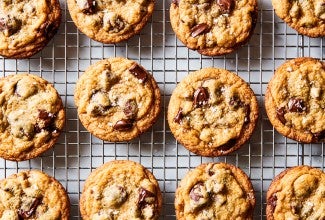Cookies spreading? It might be your pan lining.
From parchment to silicone, the material you use to line your pans affects how your cookies spread.
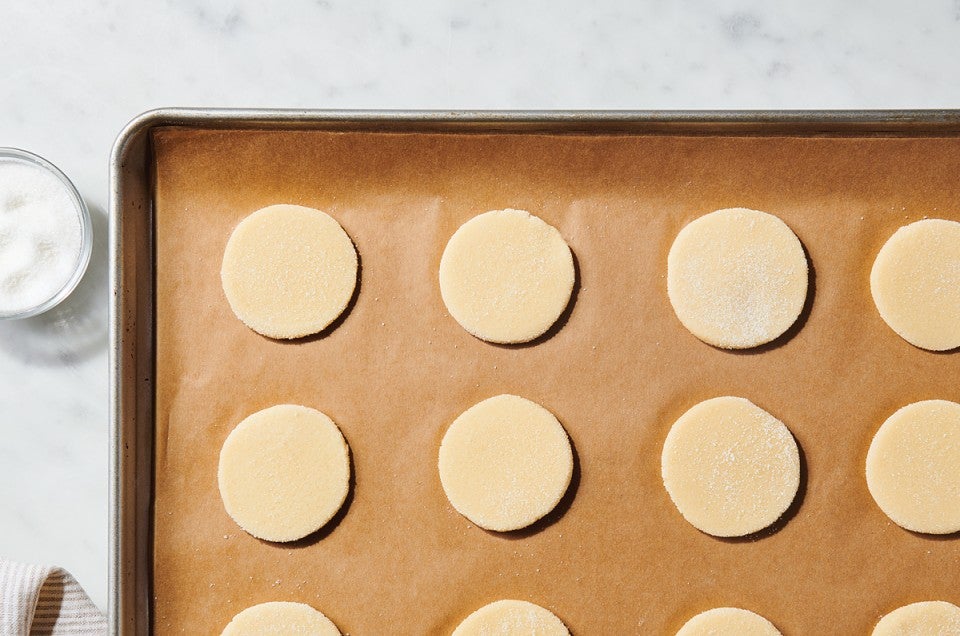

One of the most challenging aspects of baking cookies is controlling spread. Once you place your dough balls into the oven, there’s no telling if they’ll be pancakes or pucks. This poses not only an aesthetic problem (nobody wants flat cookies), but a textural one as well: Cookies that spread too much also end up crispy from edge to edge. For those who love crispy cookies, this isn’t a big deal; but for people who prefer chewy cookies, this excess spreading can lead to seriously disappointing results. (And nailing great cookies is extra important during holiday cookie season!)
It’s not (solely) the recipe that determines how much your cookies will spread — it’s also the way you line your baking sheet. I tested five different ways of lining a baking sheet to assess how much the lining affects spread, because if you can better control how much your cookies spread, you can better control the final texture of your cookies. Here are my results:
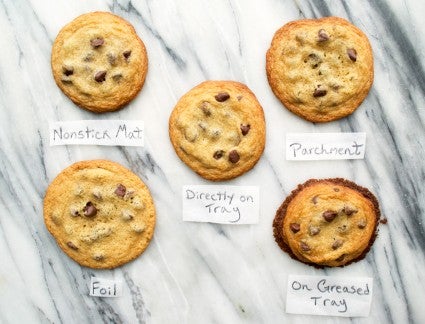
I picked five of the most common methods people use for prepping their baking sheets. The first is baking directly on a baking sheet. People who use this method often fall into two camps: those who grease their baking sheets and those who don’t, so for the sake of this test I tried both. I also tested the three most common methods for lining a baking sheet: with parchment paper, with foil, and with a nonstick baking mat. In those cases, I didn’t grease the liners.
I wanted to keep outside variables to a minimum, so I baked each cookie on the same day and used the same Chewy Chocolate Chip Cookie recipe to keep things fair. I also baked each batch for the same amount of time and on the same oven rack.
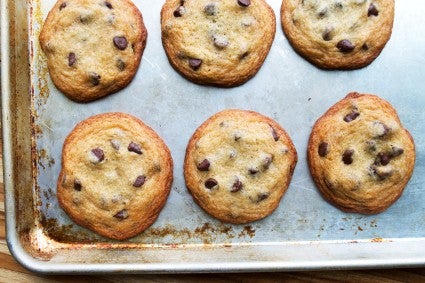
Details: For this test, I baked the cookies directly on an ungreased baking sheet. I didn’t spray the baking sheet or coat it in butter.
Cookie spread: This method was surprisingly successful. The cookies spread into perfectly even disks that retained a nicely mounded center. None of them spread too little or too much. The edges and sides didn’t burn at all, and they had an iconic chocolate chip cookie shape. The only drawback is that some of the cookies stuck to the pan slightly, but not bad enough that they broke. If you’re OK risking a few stuck cookies, then this method works well enough. You’ll end up with perfectly plump, just thin enough cookies.
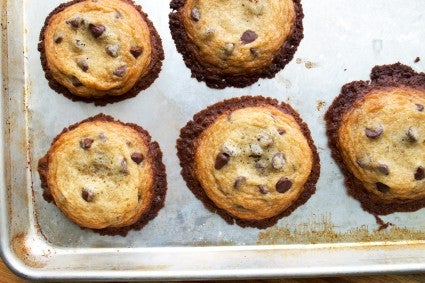
Details: These cookies were baked directly on a baking sheet. I sprayed the sheet with a thin layer of nonstick spray before placing the dough balls on it.
Cookie spread: These cookies had a nice amount of spread. They didn’t flatten out too much, were nicely domed, and didn’t become misshapen. However, the edges of the cookies burnt and “fried” in the fat on the cookie sheet. The edges developed a lacy, unsightly ring, and the cookies also didn’t release very easily from the pan, despite the spray.
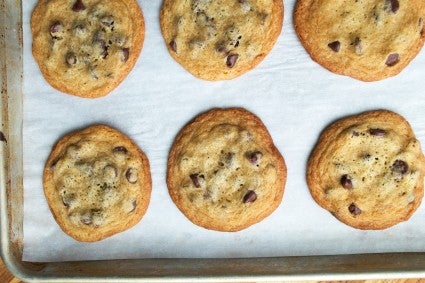
Details: For this test, I baked the cookies on a sheet of ungreased parchment paper.
Cookie spread: These cookies — for the most part — spread into nice rounds with an even thickness. Some of the cookies verged on spreading slightly too much, and they weren’t as perfectly round as some of the other tests, but not so much that I would be upset about it. Overall, this method is a safe bet, even if the cookies are not as consistent as some of the others. The cookies peeled off the parchment easily without any sticking and cleanup was a breeze. (You just toss your parchment — or save it to reuse later.)
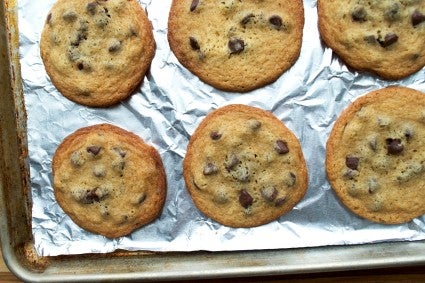
Details: For this test, I baked the cookies directly on an ungreased sheet of aluminum foil.
Cookie spread: These cookies spread the most out of all the tests. They became so flat that they looked like a different cookie recipe altogether. The thinness of the cookies made them crispy throughout, with only a very slight chew in the center. The foil stuck to the bottoms of several cookies and peeling it off proved difficult. If you’re a fan of thin and crisp cookies, this method could come in handy; but do let the cookies cool completely before trying to peel the foil off. If all you have on hand is foil and you don’t like thin and crispy cookies, try chilling your dough before baking to prevent excess spreading — or just skip the lining altogether and bake them on an ungreased sheet pan.
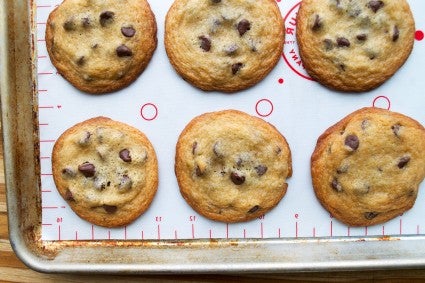
Details: For this test, I baked the cookies on King Arthur’s ungreased nonstick silicone cookie mat.
Cookie spread: These cookies were my favorite of the bunch. They didn’t spread nearly as much as several of the other tests, resulting in cookies that were thick and chewy. They had an even thickness that wasn’t too domed in the center with browned, but not burnt, bottoms and edges. The even spreading also made them the most attractive cookies: They were perfectly round with a classic cookie shape. And as a bonus, the cookies easily separated from the baking mat with no sticking whatsoever, and you can wash the mat and use it over and over.
How you line your baking sheet makes a big difference in how much your cookies spread. Which, in turn, changes the texture of your cookies. Cookies that spread too much lose their chewy texture and become crispy throughout. A good, safe bet is to use parchment paper. The cookies spread just enough while maintaining a nicely domed center. For more consistent results, baking on a nonstick mat resulted in perfectly shaped cookies that spread the perfect amount, and slightly more uniformly. In a pinch, baking directly on an ungreased baking sheet will work fine; the cookies have enough fat in them to prevent severe sticking — although you might need a thin metal spatula to pop some of them off.
Pick up a nonstick silicone cookie mat (and baking sheet!) for all of your upcoming cookie baking. And if you're looking for the best cookie recipes, see this new holiday collection: A Cookie for Everyone.
Cover photo by Danielle Sykes; food styling by Liz Neily.
